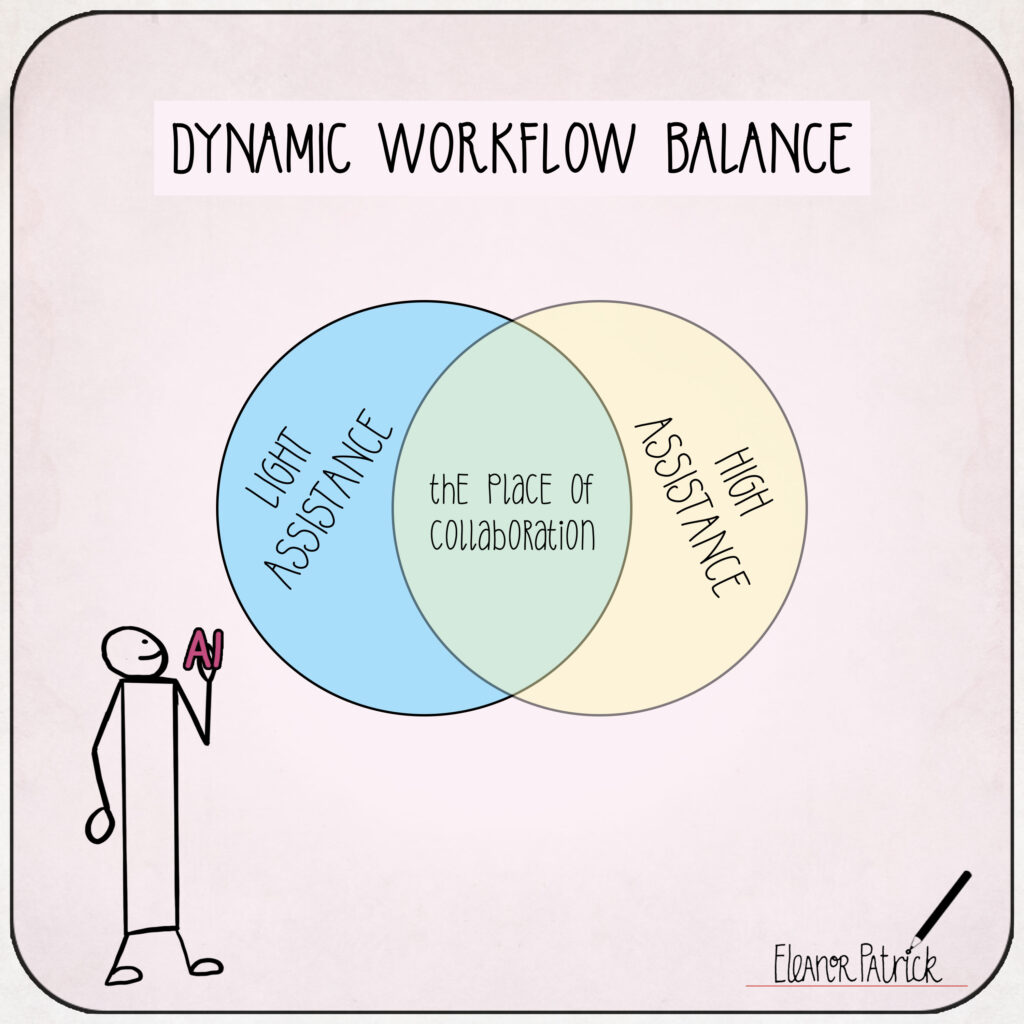
Day 05 — Dynamic Workflow Balance
The Core Concept
Integrating AI into your workflow isn’t about finding a perfect, static process. It’s about developing the flexibility to adjust your approach based on the task, your energy level, and the AI’s strengths.
Some tasks benefit from heavy AI collaboration, others from minimal assistance, and still others from a back-and-forth partnership. The skill is learning to sense which approach serves each situation best.
The Metaphor: The Adaptive Navigator
Imagine you’re navigating different types of terrain on a journey.
On smooth highways, you might use cruise control and let the car maintain speed automatically.
On winding mountain roads, you take full manual control.
In city traffic, you use GPS guidance but stay actively engaged.
Your relationship with AI should be similarly adaptive: sometimes letting it handle routine work, sometimes taking full control for sensitive tasks, and sometimes engaging in active collaboration. The skilled navigator knows which mode serves each terrain.
The Professional Story
Carlos, a content creator, initially tried to use AI the same way for every task. He was either all-in (“AI, write this entire blog post”) or completely manual (“I’ll handle all my own research”).
The results were inconsistent—sometimes brilliant, sometimes missing the mark entirely.
He learned to match his AI approach to the specific terrain of each task.
For initial research on unfamiliar topics, he relied heavily on AI to gather information and suggest angles.
For writing that required his personal voice and experience, he used AI minimally—perhaps just for editing suggestions.
For data analysis and formatting, he let AI handle most of the work while he focused on interpreting results.
His workflow became dynamic rather than rigid, and his overall output quality improved dramatically while his stress decreased.
Try This Today
1. Map Your Work Terrain: Categorize your typical work tasks into three types: routine/administrative, creative/strategic, and collaborative/analytical. Notice which category each task falls into.
2. Experiment with Navigation Modes: Try using different levels of AI assistance based on the task type:
o High assistance for routine tasks
o Collaborative partnership for analytical tasks
o Light assistance for creative/strategic work
3. Notice Your Energy Patterns: Pay attention to how your energy level and mental state affect your optimal AI collaboration style. Adjust accordingly.
Daily Integration Phrase:
“I adapt my AI collaboration to fit the terrain.”
 ContentFirst Marketing
ContentFirst Marketing